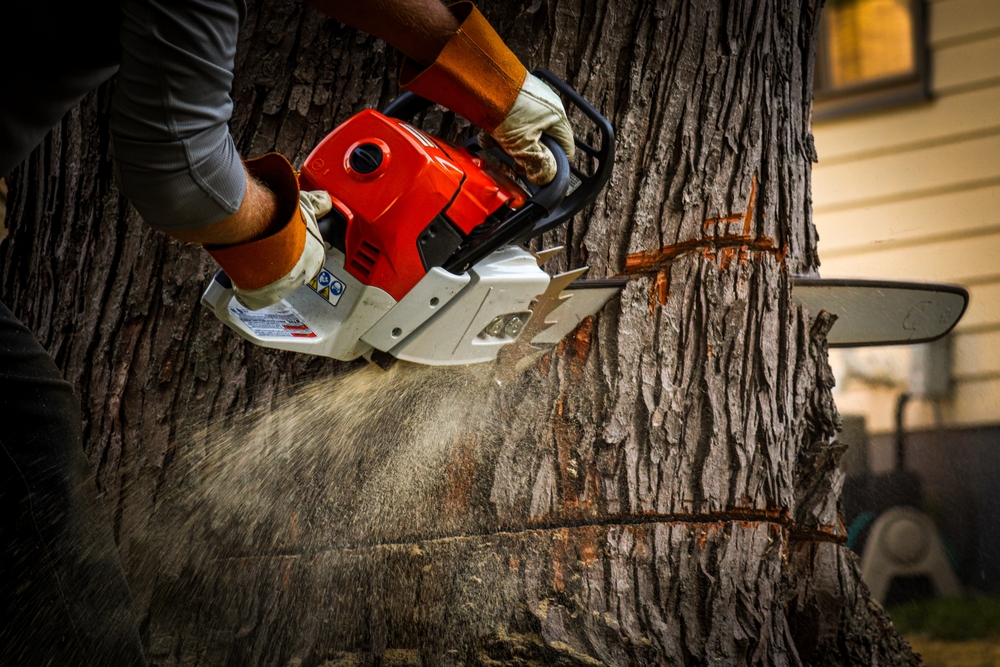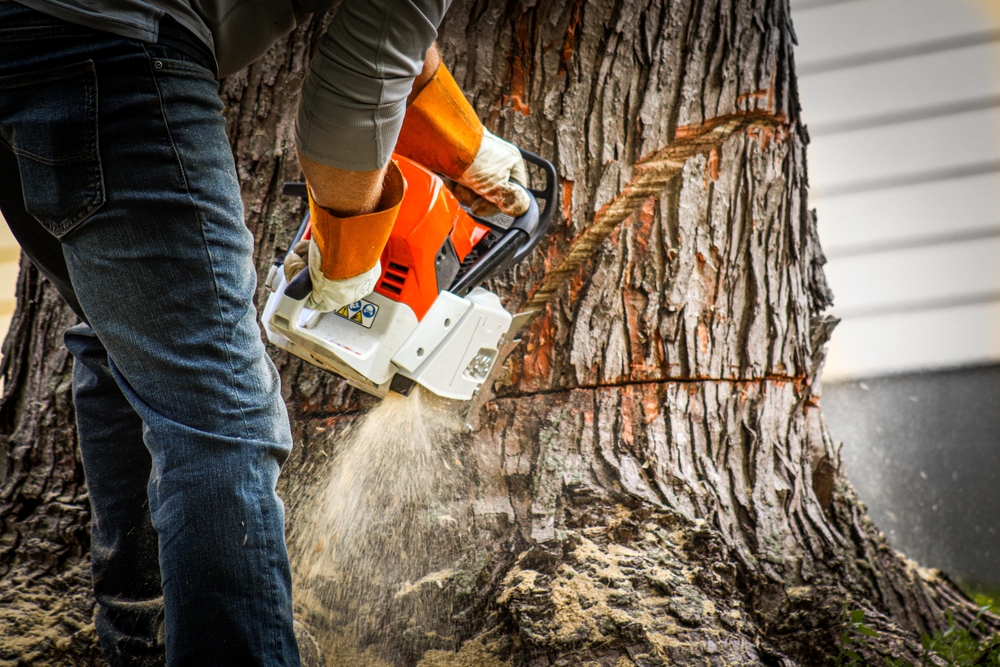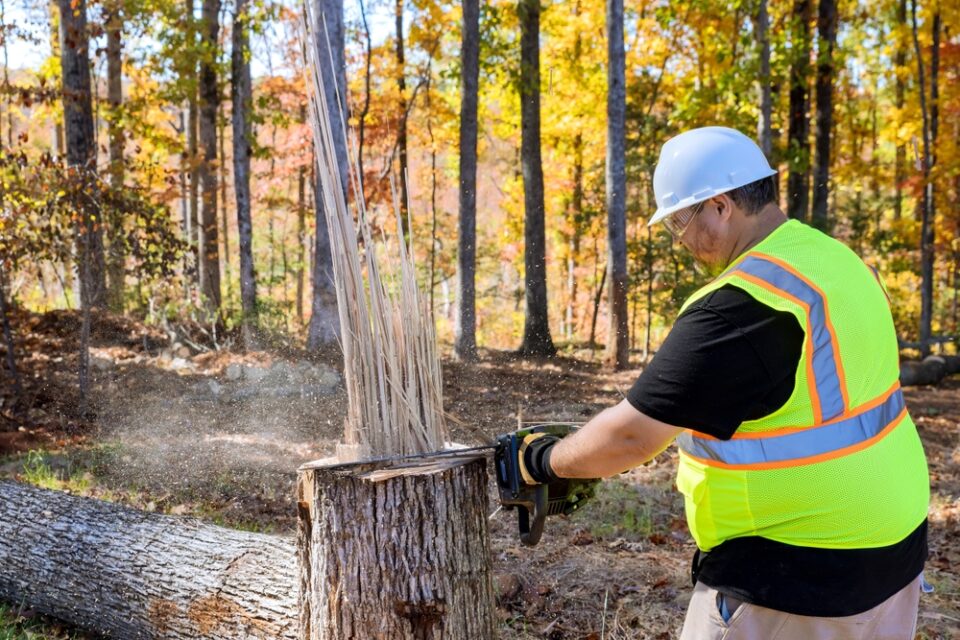Have you ever thought of what to do with that ugly tree stump taking precious space in your garden? You might have also thought of the ramifications of letting it rot naturally. Just imagine what it would be like to be able to have a swift, simple solution for regaining your outdoor space!
Tree stumps aren’t just an eyesore. They can become tripping hazards, are even a magnet for pests, and blockways in utilizing the full potential of gardens. Perhaps you’ve recently had a tree removed, or perhaps you may have inherited property containing such stumps; bringing the topic of removal up is clearly a necessary step in making safe and attractive outdoor spaces.
Everything you could possibly want to understand about stump grinding is contained in this comprehensive guide-from understanding the process, comparing methods of removal, selecting the right tools, and managing costs. Here, you will learn some professional methods, safety considerations, and practical tips for dealing with the aftermath. By the end, you will have enough information to make better choices in dealing with those stubborn garden stumps.
What Is Stump Grinding And Why Is It Important?
Understand Stump Grinding Processes
Stump grinding is a mechanical process that takes a powerful high-speed rotating disk with sharp teeth to chip away at the stumps of trees. It works by continuously breaking down the stump into wood chips and usually grinding anywhere from 15 to 30 cm below ground level. This ensures that the stump will not sprout again and can be replanted or restored into a lawn immediately.
First, the operator will position the cutting wheel of the grinder directly over the stump. Then the wheel, powered by high speed, rotates side to side until it cuts through the wood. Modern grinders can actually tackle almost any size stump-from tiny ornamentals to giant oaks measuring several meters in diameter.
Why Hire Professionals For Stump Removal Over DIY Methods
There are many advantages offered by professional stump removal as opposed to trying it yourself. Experienced operators have industrial-grade machinery capable of removing stumps which would take days with manual methods. They also possess the competence to identify and thus avoid risks, such as underground utilities or hidden rocks that could either wreck the equipment or cause injury.
Safety is perhaps one of the most considerable reasons for opting professional services. Stump grinders are machines of such power and must be operated by trained personnel for safe running. From protective gear to accepted safety protocols, these are well covered regarding professionals. They are also insured, which covers you from any liability should anything go wrong during the removal process.
Highly Necessary Tools And Equipment For Stump Grinding
Types And Features Of Stump Grinders: Professional
Professional stump grinders fall under three major categories with specific uses for each. Walk-behind grinders are the compact units and are used more in residential houses with limited access to the unit. Carrying a 35-50 horsepower engine capacity, this equipment can take care of with stumps of 60 centimeters diameter at max. Their mobility gives them a great advantage when passing through garden gates and working in tight spaces.
Self-propelled track units are middle ground stump grinding equipment. More portable than walk-behind models, the self-propelled tracked model has a higher amount of power. Typically engines run with a horsepower rating of between 50-100. It can take on bigger sized stumps and can do its job much quicker than the others. With tracks, it has the stability to work on slopes and soft grounds which are impossible for wheeled equipment.
Basic Safety Gear That All Operators Should Have
PPE is essential for any stump grinding operation. Safety glasses or a full-face shield prevent any wood chip or other debris from getting into a user’s eyes while operating a stump grinder. Small pieces, when shot at high speed, can cause serious eye injury. The best protection is found in a wrap-around style, keeping debris from entering from the sides.
Hearing protection is therefore vital as noise levels on a stump regulator exceed 100 decibels. A long exposure may positively affect an individual’s hearing capacity, causing damage in the long run. The earmuffs or well-fitted ear plugs can be used to reduce noise exposure to a safe level, while enabling the operator to hear important changes regarding the equipment or warnings from other people in the vicinity.

Cost Considerations: What Affects Stump Grinding Prices?
Factors Affecting Professional Service Pricing
Stump grinding prices vary greatly according to many parameters, with size being the principal criterion: stump diameter typically determines the price; moreover, with larger stumps, that price increases exponentially. For instance, a 30-centimetre stump could be charged for approximately £50-75 to remove, whilst a metre-wide stump would cost more than £300 to grind.
However, more stumps also mean more expense, although most businesses will offer some kind of discount for multiple removals. Accessibility also plays a very important role in influencing the cost. Stumps located in open areas with easy equipment access cost less than those located in cramped spaces, requiring smaller, less efficient equipment. Slopes or narrow gates or even the need to transport equipment long distances would skyrocket the price.
Some properties even require carrying equipment by hand, which increases tremendously the time labor and costs.
DIY Vs Professional Cost: In Real Terms Compared Of Costs
It’s more than comparing simple equipment rental fees to see the difference in costs between DIY and profs. Rental of a grinder averages around £150-300 for daily use, depending on machine size. Add safety gear (50-100), fuel (20-30), and probably delivery fees (50-100). A single job of removing one stump could cost in the region of £300-500 when you add up rental and supplies alone, so it’s quickly getting into the area of better professional costs.
These are normally the types of surprising hidden expenses that DIYers do not expect. In most cases, it would be the damage deposit by the equipment hired that amounts to hundreds of rentals. Slower than the pros, neophytes will require more time for the job, and thus, longer rentals. Then there is the physical cost: strain, blisters, and fatigue also have costs in terms of lost work time or medical treatment.
What Comes After The Grind?
Utilizing Wood Chips As Garden Mulch
Fresh wood chips generated during stump grinding can be put into high-grade mulch; proper handling is necessary, however. Unlike commercial mulch, fresh chips have not aged or treated, and they will initially rob nitrogen from soil while decomposing. This can be countered by applying nitrogen-dense fertilizer when using fresh chips around plants, or the fresh chips can be aged for several months before use, turning the pile occasionally for even decomposition.
Property owners are often taken by surprise at the volume of chips produced. A single large stump may yield several cubic metres of chips. You can disperse excess chips on pathways, around trees or within the garden beds where their nitrogen-robbing effects will not impact desired plants. Fresh chips have an excellent effect when it comes to weed suppression and are often used in utility areas or around established trees themselves.
Filling The Hole And Restoring Lawn
After grinding, what you have is a depression filled with wood chips and loose soil. The size of the hole will greatly depend on the depth of the stump grinding and how far the roots extend. You should start with restoration by cleaning up the excess wood chips and keeping only a thin layer that mixes with soil. This gives organic matter but will not be so woody to inhibit grass growth.
Fill the hollow with quality topsoil, slightly mounding it above the surrounding ground level. Eventually, during the subsequent weeks, settling takes place as the remaining wood decomposes, and soil compacts. If you want an instant lawn restoration, mix 70% topsoil with 30% compost. This mixture gives great structure with nutrients for the new grass growth. Water thoroughly to promote settling and find out whether there are low spots and places that might require additional fill.

Choosing The Right Professional Service
Questions To Ask Your Local Tree Service Provider
You cannot just select any stump grinding service; you must choose the one best suited for your needs. Begin by asking how long they have been in business grinding stumps in your area. Local experience is important because operators who have experience here know what soils and some trees are, and most importantly, what the challenges are for really effective stump grinding. Ask them about their equipment and whether it is suited for the job you require.
To sum it up, a thorough investigation on public liability insurance proof and worker’s compensation coverage is needed. Also, how is their work safety and training practices? This kind of information should be offered without difficulty by professional services. What are their policies on property damage? Accidents do occur, and you would expect a well-reputed company to have a guideline in place to address any occurrences.
Insurance And Certification Essentials
Professional arborists and providers of tree services should have appropriate industry certifications. Certified Arborists test their mettle through rigorous testing, and they keep their credentials current through continuing education. Stump grinding does not legally require certification, but certification indicates professionalism and commitment to the practices in the industry. Many certified professionals belong to organisations like the Arboricultural Association, which maintains professional standards.
Insurance requirements go beyond basic coverage. Comprehensive public liability insurance should cover at least £1-5 million, protecting you if property damage occurs. Workers’ compensation protects you from liability if injured workers are on your property. Some operators carry additional coverage for underground utility damage. Always verify current insurance-reputable services provide certificates without hesitation.
Conclusion
Stump grinding stands out as the most efficient and practical solution for removing unwanted tree stumps from your property. Throughout this guide, we’ve explored the merits of this mechanized process over the chemical options or manual removal-from immediate effects, low environmental impact, to copious, useful wood chips produced as by-products.

